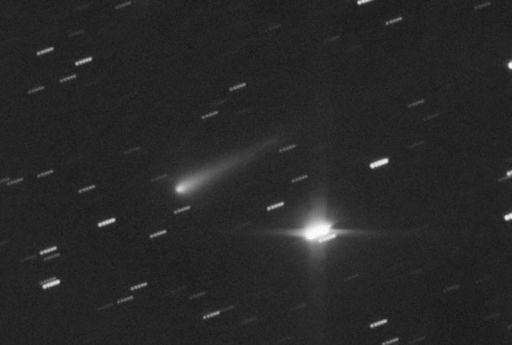http://science.nasa.gov/science-news/science-at-nasa/2013/18jan_cometison/
http://ssd.jpl.nasa.gov/sbdb.cgi?sstr=C%2F2012%20S1;orb=1;cov=0;log=0;cad=0#orb
Comet ISON WTF NASA ?
5 Things you need to know! (part 11 in series)
Entertaining
2. Since it is currently dimmer than magnitude 14, you need a decent astrophotography rig to see it; it is not readily visible even with the aid of a moderate size telescope.
3. It will be high enough in the early morning sky to view it sometime in September while it is still approaching perihelion. At the same time it should start outgassing its water ice stores and show a corresponding increase in brightness.
4. It reaches perihelion on November 28th. Earlier that month it will cease to be visible in the pre-dawn hours as it dives towards the sun.
5. So far ISON has not brightened as much as it was originally projected to. It may not be as significant of a comet as originally hoped, in fact there is a chance it may not even survive perihelion. Once it starts outgassing from its water ice stores it could buck the current trend and go on to reach the same magnitude as the moon at perihelion, which is also when it will be next to the sun in the sky. Only time will tell.
"Because this supposed "dirty snowball" will get only 800,000 miles away from our sun,
not melt, and upon exiting it will damn near crash into Earth.
Bad ass snowball!"
Is this Wormwood?
It will pass over the North Pole Christmas
Last edited by Carol on Sun Sep 22, 2013 9:12 am; edited 1 time in total


















 Happy "belated" Birthday!
Happy "belated" Birthday!
